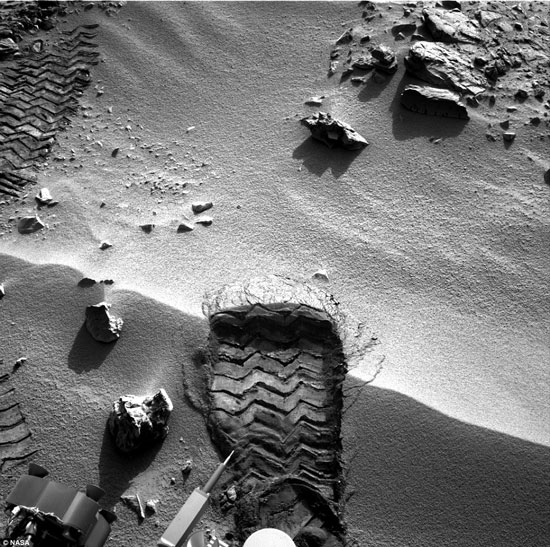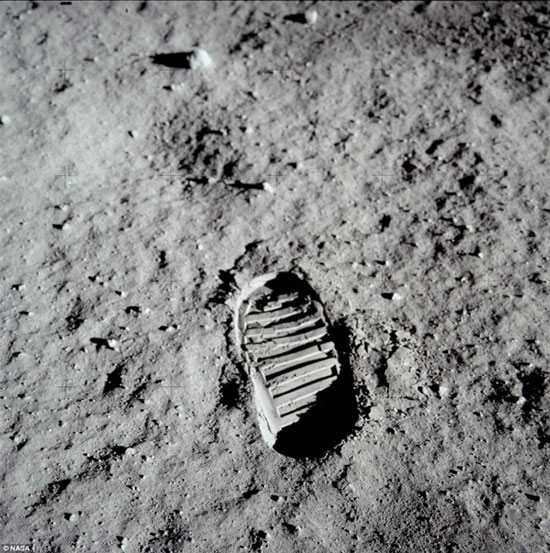Photo of the first 'footprint' on Mars
One of the latest photos sent back to Earth by the Curiosity Mars has shown the first 'footprint' printed on the red planet. It is worth mentioning that it looks like the footprint of American astronaut Neil Armstrong leaving on the Moon in a strange way.

The first "footprint" printed on Mars is actually
is the tire track of Curiosity probe.(Photo: NASA)
According to the Daily Mail, the "footprint" on Mars is essentially the tire of the Curiosity probe when moving on the surface of the red planet. It shows many similarities with the iconic footprint of the first person to set foot on the Moon on July 20, 1969 in the Apollo 11 mission of the US Aerospace Agency (NASA).
The new photo was taken by Navcam camera on the right of the Curiosity vessel on the 57th day of Mars (October 3, 2012, at 19:08:27 UTC).
Studies of the remnants of Spirit and Curiosity probes reveal that the time for these traces to be wiped out by the wind is usually only 1 year on Mars or 2 years on Earth.

One of the iconic footprints of American astronaut Neil
Armstrong - the first person to set foot on the Moon - remains in this place.
Meanwhile, the iconic footprint of American astronaut Neil Armstrong is expected to continue to remain on the lunar surface for a long time (NASA experts say up to 1 million years on the face. The moon has no wind to blow it away.
NASA's $ 2.5 billion Curiosity probe landed on Mars on August 5 with the aim of finding out whether the Gale hole on the red planet was eligible for bacterial life. is not. This 6-wheeled robot car only experienced the first 2 months of its 2-year mission.
Although the Curiosity is moving to a location called Glenelg, the main target of the probe is still to reach the foot of Sharp Mountain, located at the edge of the Gale hole and about 5.5 km from the center of the Gale hole. The Curiosity has now found evidence that the undulating land at the base of Sharp's mountain once had water a long time ago.
- NASA has just taken a monstrous photo that looks like a fake about Mars
- Unique photo
- Mars appears in the image of the Earth at a distance
- Netizens talk about the giant mouse on Mars
- Did the ocean on Mars get into the rock?
- Earth image taken from Mars
- Unique, beautiful, little-known photo angles about the red planet
- The bright yellow footprint floated in the sky
- NASA explains the confusing
- Top 10 photos of Mars
- Aliens equipped with weapons on Mars?
- Amazing images of the Martian surface
 Van Allen's belt and evidence that the Apollo 11 mission to the Moon was myth
Van Allen's belt and evidence that the Apollo 11 mission to the Moon was myth The levels of civilization in the universe (Kardashev scale)
The levels of civilization in the universe (Kardashev scale) Today Mars, the sun and the Earth are aligned
Today Mars, the sun and the Earth are aligned The Amazon owner announced a secret plan to build a space base for thousands of people
The Amazon owner announced a secret plan to build a space base for thousands of people